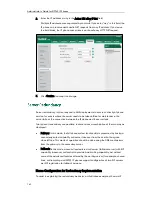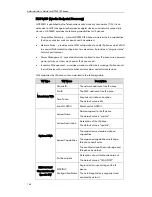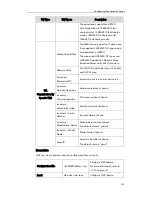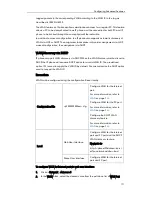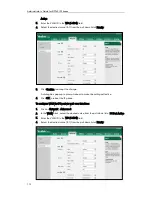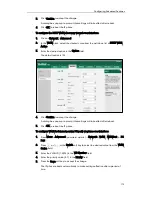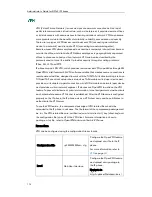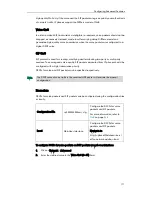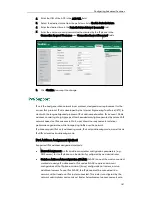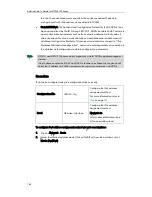
Administrator’s Guide for SIP-T4X IP Phones
176
Quality of Service (QoS) is the ability to provide different priorities to different packets in
the network, allowing the transport of traffic with special requirements. QoS guarantees
are important for applications that require fixed bit rate and are delay sensitive when
the network capacity is insufficient. There are four major QoS factors to be considered
when configuring a modern QoS implementation: bandwidth, delay, jitter and loss.
QoS provides better network service through the following features:
Supporting dedicated bandwidth
Improving loss characteristics
Avoiding and managing network congestion
Shaping network traffic
Setting traffic priorities across the network
The Best-Effort service is the default QoS model in the IP networks. It provides no
guarantees for data delivering, which means delay, jitter, packet loss and bandwidth
allocation are unpredictable. Differentiated Services (DiffServ or DS) is the most widely
used QoS model. It provides a simple and scalable mechanism for classifying and
managing network traffic and providing QoS on modern IP networks. Differentiated
Services Code Point (DSCP) is used to define DiffServ classes and stored in the first six
bits of the ToS (Type of Service) field. Each router on the network can provide QoS
simply based on the DiffServ class. The DSCP value ranges from 0 to 63 with each DSCP
specifying a particular per-hop behavior (PHB) applicable to a packet. A PHB refers to
the packet scheduling, queuing, policing, or shaping behavior of a node on any given
packet.
There are four standard PHBs available to construct a DiffServ-enabled network and
achieve QoS:
Class Selector PHB – backwards compatible with IP precedence. Class Selector
code points are of the form “xxx000”. The first three bits are the IP precedence bits.
These class selector PHBs retain almost the same forwarding behavior as nodes
that implement IP precedence-based classification and forwarding.
Expedited Forwarding PHB – the key ingredient in DiffServ model for providing a
low-loss, low-latency, low-jitter and assured bandwidth service.
Assured Forwarding PHB – defines a method by which BAs can be given different
forwarding assurances.
Default PHB – specifies that a packet marked with a DSCP value of “000000” gets
the traditional best effort service from a DS-compliant node.
VoIP is extremely bandwidth- and delay-sensitive. QoS is a major issue in VoIP
implementations, regarding how to guarantee that packet traffic not to be delayed or
dropped due to interference from other lower priority traffic. VoIP can guarantee
Summary of Contents for SIP-T4X
Page 1: ...T 4 XI PP h o n e A d mi n i s t r a t o r G u i d e...
Page 2: ......
Page 15: ...Administrator s Guide for SIP T4X IP Phones xiv...
Page 23: ...Administrator s Guide for SIP T4X IP Phones 8...
Page 217: ...Administrator s Guide for SIP T4X IP Phones 202...
Page 233: ...Administrator s Guide for SIP T4X IP Phones 218...
Page 245: ...Administrator s Guide for SIP T4X IP Phones 230...
Page 257: ...Administrator s Guide for SIP T4X IP Phones 242...

